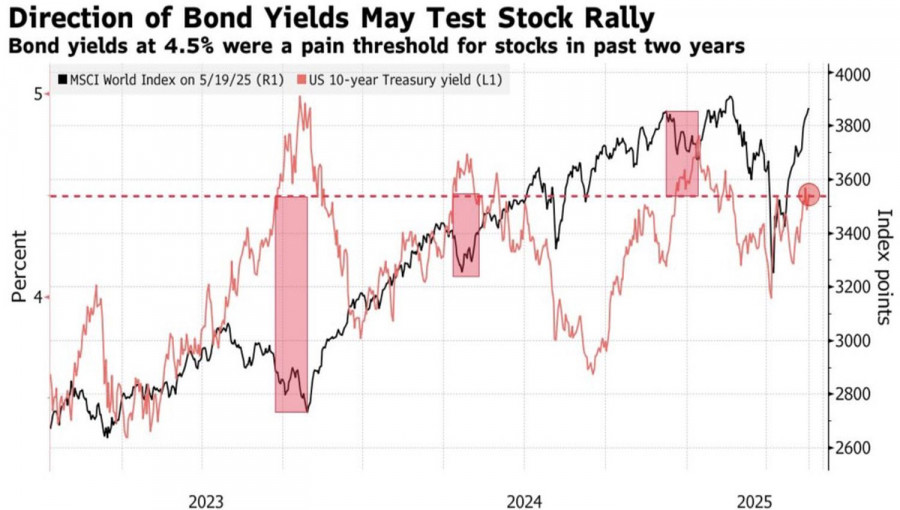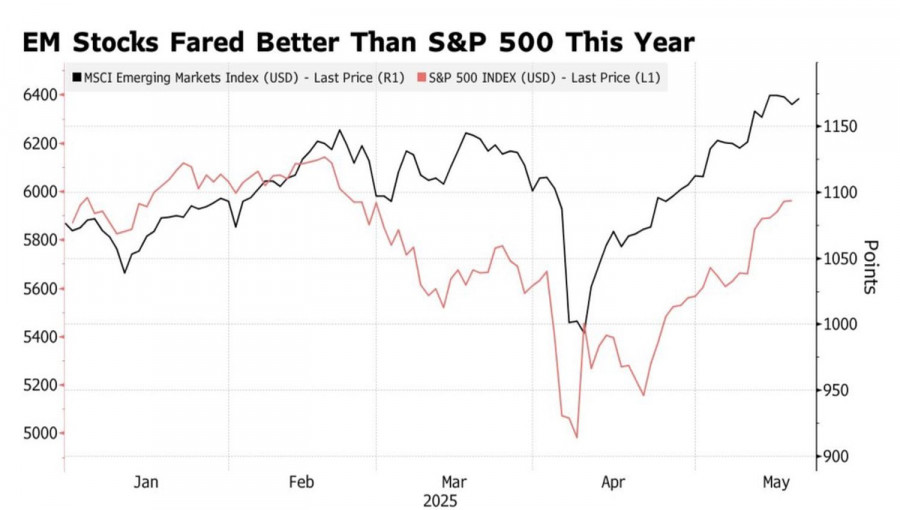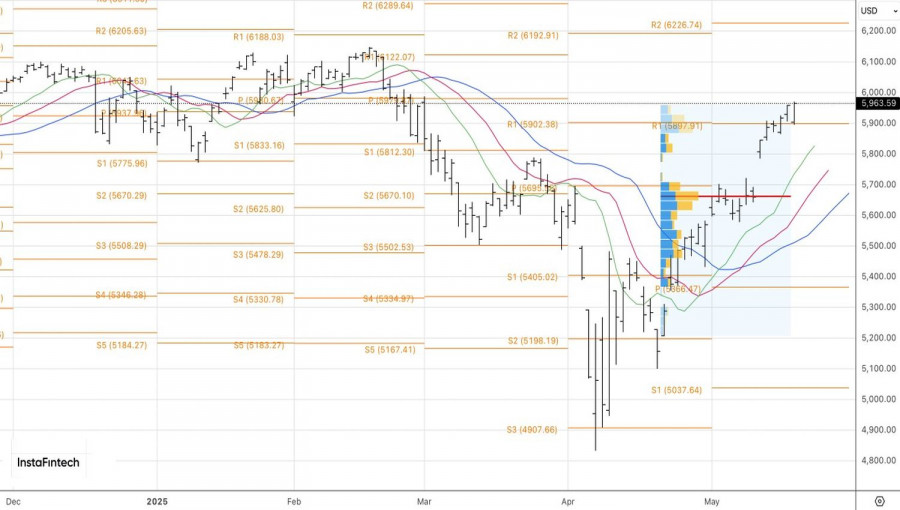Vea también


 20.05.2025 09:11 AM
20.05.2025 09:11 AMWhen a crowd identifies a leader, it relentlessly pushes forward, clearing everything in its way. Retail investors heeded Morgan Stanley's call to "buy the dip" and began snapping up U.S. stocks with renewed vigor. As a result, their net long positions on May 19 surpassed $4 billion for the first time in history. The market turned a deaf ear to the downgrade of the U.S. credit rating and continues to hear only what it wants to.
Logically, Moody's actions should have served as a warning signal of overbought conditions in the S&P 500. The U.S.'s fiscal issues could worsen significantly if Congress extends the 2017 tax cuts without reducing spending. This could trigger a surge in Treasury yields, increasing corporate costs, damaging earnings, and pulling down global stock indices. Currently, the increase in bond yields doesn't appear to be a concern for most people.
Nor does the Federal Reserve's unwillingness to act. According to New York Fed President John Williams, the central bank is unlikely to take a clear position on the economic consequences of White House policy before June or July. The market shouldn't expect a rate cut before September, a view echoed by the futures market, which now sees only two rate cuts by year-end. Normally, this would disappoint U.S. equities—not this time. JP Morgan has stated that even a global recession might not prompt central banks to help; they've become too complacent.
HSBC claims the U.S.–China truce has changed the game, fueling a long-term surge in risk appetite. Wells Fargo agrees, advising investors to ditch emerging market equities in favor of their American counterparts. The global economy may recover by year's end, but for now, it's time to "Buy America."
If a downgrade of the U.S. credit rating didn't rattle the market, something worse may be needed to trigger a correction in the S&P 500. Retail investors are inflating a bubble in the broad market index, and when it bursts, the decline could be swift. JP Morgan estimates that a credit crisis and falling earnings forecasts could cause U.S. equities to drop by 10%.
But would that even be enough to reintroduce fear? If Moody's and the Fed can't change the crowd's mind, can private companies?
On the daily chart of the S&P 500, bulls have managed to keep the index above the key 5900 level, preserving long positions. It makes sense to hold those longs for now, targeting 6045 and 6120. A stop-loss is recommended near the cluster of pivot levels at 5900.
You have already liked this post today
*El análisis de mercado publicado aquí tiene la finalidad de incrementar su conocimiento, más no darle instrucciones para realizar una operación.



